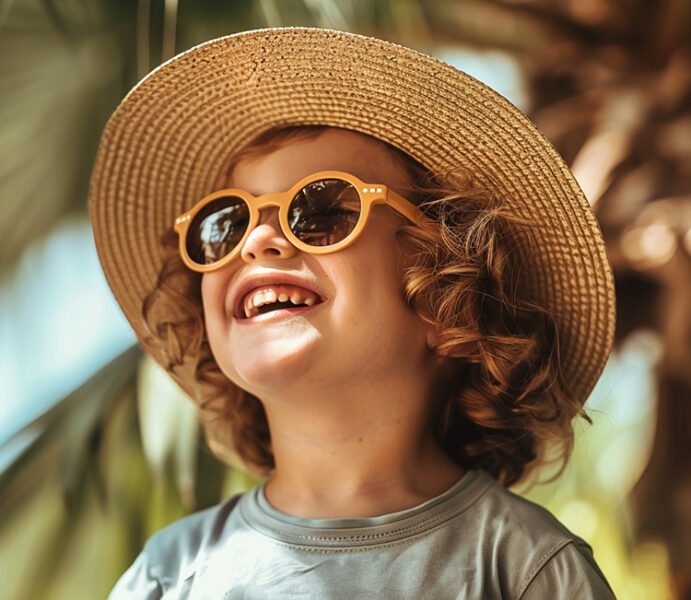Sunglasses help you in two important ways. They filter light and they protect your eyes from damaging UV rays. Mounting evidence shows that exposure to UV rays can damage your eyes. Long-term exposure to UV rays can lead to cataracts, macular degeneration or skin cancer around the eyelids.
Choosing Sunglasses
Sunglasses should be worn when you are outdoors so you can protect your eyes.
You should choose sunglasses that:
- reduce glare
- filter out 99-100% of UV rays
- protect your eyes
- are comfortable to wear
- do not distort colors.
Be aware that if you are at the beach or on the ski slopes, you should wear sunglasses with a darker tint to block more light. Your risk of eye damage from the sun is greater because of reflection off the water and snow.
Sunglasses makers do not always attach a tag or label stating the amount of UV radiation that sunglasses block. Only buy sunglasses that provide a clear statement about how much UV radiation is blocked.
Read the labels! Always read labels carefully and look for labels that clearly state the sunglasses block 99 to 100% of UV-A and UV-B rays.
Do children need sunglasses?
Yes. Children are at special risk from the harmful effects of UV rays, since their eyes do not have the same ability as adults to protect from UV radiation.
Here are some helpful suggestions for choosing sunglasses for children:
- Check to make sure the sunglasses fit well and are not damaged,
- Choose sunglasses that fit your child’s lifestyle – the lenses should be impact resistant and should not pop out of the frames,
- Choose lenses that are large enough to shield the eyes from most angles.
- Find a wide-brimmed hat for your child to wear along with the sunglasses. This will give your child extra protection against the sun. Wearing a hat can cut the amount of UV rays that reach the eyes in half.
Like adults, children should wear brimmed caps and sunglasses that screen out 99 to 100% of UV rays.


